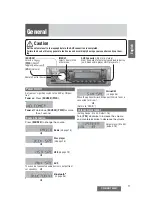
11
CHAPTER 3: Installation
3.2.2 C
ONVERTER
-P
AIR
P
ROCEDURES
1. First locate each Converter within 20 feet (6.1 m) of its associated
parallel device, close to a power outlet.
2. Run your parallel input cable from the PC (or whatever device is
transmitting) to the input-side Converter’s parallel (DB25 female) port.
3. Run UTP or the included flat satin serial cable from the input-side
Converter’s serial (RJ-45 female) port to the RJ-45 female serial port on:
• the output-side S
↔
P Converter, or
• an RJ-45-female-to-DB25-female adapter pinned as in Figure 3-1
(FA081-R2) to convert to EDDC for a long cable run.
3A. If you’re running EDDC, complete the link between the Converters.
Run the EDDC, attach the output-side FA081-R2 adapter, and run the
second length of UTP or flat satin.
4. Finish your cabling installation by running your parallel ouput cable
from the output-side Converter to the parallel printer (or whatever device
is receiving).
5. Now you’re ready to set the switches on your S
↔
P Converters (128K).
First set their external DTE/DCE slide switches to complement each other:
one as DCE (switch towards the RJ connector) and the other as DTE (switch
towards the parallel connector; it doesn’t matter which Converter gets
which setting). Then set their DIP switches (see Table 3-1; positions are
ON when down and OFF when up).
Set positions 1 through 5 and 7 identically: Whichever settings you
choose for one Converter should be the same on the other. It won’t make
much difference whether you choose hardware or software flow control.
We recommend 9600 baud for distances up to 500 feet (152.4 m), but if you
don’t need to transmit that far, you may be able to use higher speeds;
contact your dealer for assistance in determining your maximum baud rate.
Finally, using 8 bits with no parity will give you slightly higher throughput
than 7-bit word structures.
Содержание PI035A
Страница 26: ...NOTES...












































